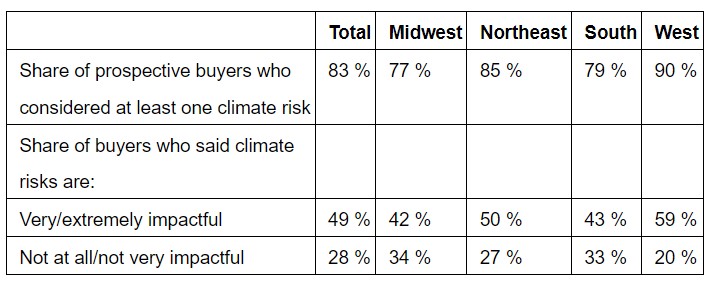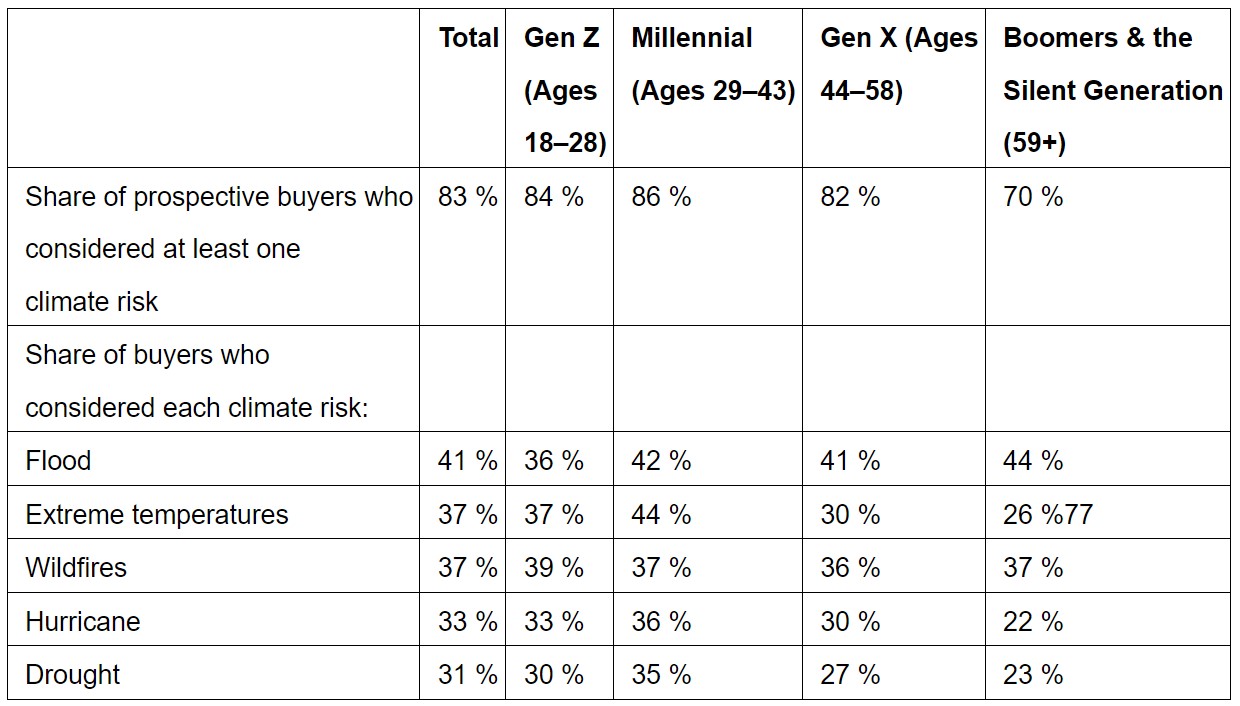 Be it floods or tornadoes, earthquakes or wildfires, hurricanes or droughts, a record 80% of prospective home seekers are now considering adverse climate risks (on a local and regional level) when they are doing their shopping, according to a new report from Zillow.
Be it floods or tornadoes, earthquakes or wildfires, hurricanes or droughts, a record 80% of prospective home seekers are now considering adverse climate risks (on a local and regional level) when they are doing their shopping, according to a new report from Zillow.
“Climate risks impact where most prospective buyers shop for a home,” said Zillow Senior Population Scientist Manny Garcia. “While all generations juggle trade-offs like budget, floor plans and commute times, younger home shoppers are more likely to face another consideration: They want to know if their home will be safe from rising waters, extreme temperatures and wildfires.”
According to Zillow’s numbers, a clear majority of prospective buyers in the four major regions of the country (Northeast, South, Midwest, and West) are considering at least one type of adverse climate event when shopping for a home. People in the West are most likely to report climate risk as very- or extremely impactful in their search for a home, followed by those living—or considering moving to the Northeast. On the flip side, one-third of Midwestern and Southern shoppers say climate risks are not very impactful or not at all impactful to their real estate journey.

By the numbers, the share of prospective buyers who considered at least one climate risk rose to a record 83%, with 77% of buyers in the Midwest contemplating this conundrum, 85% in the Northeast, 79% in the South, and 90% in the West.
Those who said climate risks are very or extremely impactful of their choices averaged out to 49% of seekers. This watered down to 42% of Midwest buyers, 50% of Northeastern buyers, 43% in the South, and 59% in the West.
Among those most worried about climate change are younger home shoppers, who are currently driving the market.

As of today, the median age of today’s home buyer is 39-years-old and first-time home buyers make up 50% of all purchases. Millennial and Gen Z shoppers—who comprise 54% of all home buyers—are most likely to consider climate risk when determining where to shop for a home. Across generations, a majority of shoppers reported taking into account at least one climate risk when looking for their next home.
In cases where climate change may not be on the tip of home seekers tongues, about half plan to remain in areas that pose similar or identical climate risks; only 23% reported that they are considering homes in areas that they believe to be safer from the dangers of climate disasters.

Still, affordability is still the greatest hurdle for consumers, especially first-time home shoppers who are tending to purchase whatever they can afford, wherever they can afford it. A typical 20% down payment now takes about 12 years to save for, but downpayment assistance programs are helping mitigate that problem.
Click here to see the report in its entirety.






